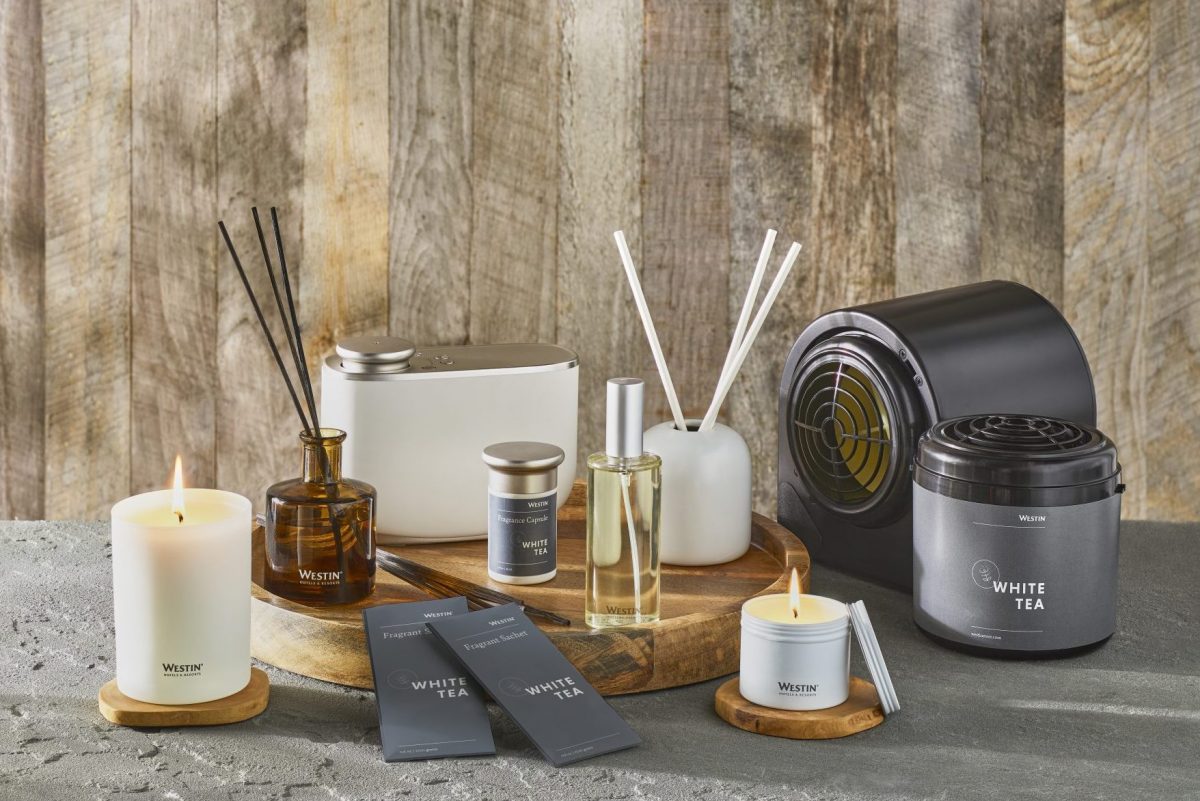Skift Take
Rather than a one-size-fits-all approach to olfactory pleasures, hotels are seeing unexplored branding opportunities for property and consumer-level personalization.
As a travel writer, Lindsay Silberman had always toyed with the idea of re-creating the experiences she had in boutique properties around the world. But it wasn’t until the pandemic that she actually had the time to focus on doing so.
Hotel Lobby Candle was born.
“When you walk into a hotel after a 24-hour flight, you’re disoriented and tired,” Silberman said. “But a scent can have a way of giving you a sense of awakening, a sense of place, and feel luxurious instantly.”
The passionate adventurer is not alone, and sales of her home decor evoking the romance of a jaunt to Paris or a sultry stay in Miami skyrocketed while many jets remained grounded.
Would-be travelers stuck at home are seeking an escape and appealing to olfactory functioning — the sense most closely linked to memory and emotion — has been a powerful way for hotel brands to remain top of mind with consumers while bookings are still down.
The Westin’s White Tea signature scent has propelled the fragrance category for Marriott Bonvoy Boutiques to double in the past three years, and the monthly fragrance subscription program has notably seen recent “rapid growth,” according to Jason Nuell, senior vice president of premium brands for Marriott.
Since its debut over a decade ago, White Tea has developed a cult following. It’s pumped throughout all common areas across all Westin properties globally and, while guest rooms are not scented, bath products within them are. White Tea is available for consumer purchases as a candle, scent sticks, potpourri, and a room diffuser or large-scale diffuser.
But can the signature sniff please all the people, all of the time?
Author and former New York Times scent critic Chandler Burr thinks so. White and vanilla are the two scents guaranteed not to offend anyone’s olfactory leanings, he said; white tea and vanilla are Westin’s signature top notes. But what about lily, one of its other tones, which more frequently rubs some sensitive noses the wrong way? That’s an inexact science perfumer Sue Phillips has worked on for decades.
Like music, everyone has individual preferences. But while tunes can be turned off, scents that are considered “too spicy” or “too floral” are imbued throughout one’s surroundings. They can’t be turned down, or off, and thus, linger.
A successful scent program needs to factor in a hotel’s interior distribution strategy, its location, and perhaps even seasonality, she said.
Phillips recommends that guest rooms be scent-free, but lobbies’ wide swaths represent an open opportunity.
“The lobby should reflect the brand essence to a wide array of customers,” she said.
But this must be executed expertly.
“A heavy woodsy, spicy fragrance in a light, airy hotel would be inappropriate,” Phillips advised. “If the hotel is in a hot climate like Florida, then the ideal signature scent would be one that is refreshing, airy, uplifting, and not heavy or ‘sophisticated.’”
In other words, hoteliers with a global footprint have a challenge in front of them to strike the right note. But does an approach that’s alternate to Westin’s dilute the brand identity or infuse a sense of distinction?
Instilling a sense of place and uniqueness is one of the reasons the Hyatt-owned Andaz Hotels & Resorts partnered with The Society of Scent to create custom scents for each hotel in its portfolio. Perfumers visited each location to curate, for instance, the essence of Mexico’s Riviera Maya with “the woody aroma of smoking copal and the fresh green scent of sábila (aloe vera).”
Evocative Scents Making Sense
In Amsterdam, “You Blue My Mind” evokes Delft china, and a bouquet of juniper, chamomile and lavender captures a stroll through one of the city’s ubiquitous flower markets.
Other Hyatt brand portfolios like Thompson Hotels have gone so far as to curate different scents for each part of a property. The new Thompson San Antonio Riverwalk has an evolving collaboration with local “scent-lebrity” Kevin Elkins. Elkins developed the signature scent for another San Antonio boutique favorite, Hotel Emma, in addition to a more ubiquitous favorite, W Hotels’ guest room scent.
When the Thompson opened last spring, Elkins was commissioned to create what the brand sought as “unique, emotion-inducing scents” for each space. The essence of “Papyrus” wafts through guest rooms while “Luna Noir” echoes throughout the rooftop lounge.
It’s part of a broader initiative from Thompson to distinguish themselves in a still-burgeoning market of boutique lifestyle-oriented properties by offering experiential travel elements. Thompson’s Culture Lives Here initiative includes collaborations with local artists — whom they’ve dubbed “culture shifters” — to produce immersive experiences on property. The hotel also hosted a monthly pop-up featuring Elkins’ fragrances.
Having more than one scent on-site is a bold move, but perhaps a good one, said Phillips. She’s developing a project for European luxury properties that’s still an undiscovered frontier in hospitality, she believes.
“I do think that having a guest be able to select his or her signature scent for their actual guest room would further enhance the important personalization aspect of a hotel stay,” she said.
Have a confidential tip for Skift? Get in touch
Tags: andaz, future of lodging, hyatt, marriott, thompson hotels, westin
Photo credit: Westin's White Tea scent throughout public areas garnered a customer following and is now even available for purchase. Marriott International / Westin
